AI 3D model generators use artificial intelligence and advanced algorithms to create three-dimensional (3D) models from a wide variety of inputs, including text, images and video. I reviewed the best AI 3D generators across various categories, including text, images and videos, to see how they compared on pricing, key features, and capabilities, as well as their pros and cons, to help you determine the best solution for your needs.
Here are my picks for the top AI 3D generators:
- Masterpiece X: Best for ease of use
- Rokoko Vision: Best for real-time full-body motion capture
- Spline: Best for collaboration and team projects
- Sloyd: Best for customization
- 3DFY AI: Best for gaming and architecture
- Luma AI: Best for artistic video generation
- DeepMotion: Best for full-body marker tracking
- Ponzu: Best for texture generation
- NeROIC: Best for capturing high-quality geometry
AI 3D Generator Comparison
The table below shows how the best AI 3D generators compare on price, along with my recommendations for use case and which of the model generators they support. There are primarily three model types:
- Text-to-3D: Generate 3D models from text descriptions; particularly useful in fields like architecture, design, or gaming.
- Image-to-3D: Convert 2D images into fully realized 3D models; used by professionals in industries like computer vision, virtual reality, and entertainment.
- Video-to-3D: Create 3D models from uploaded videos; commonly used in robotics, autonomous vehicles, and augmented reality.
| Best For | Text-to-3D | Image-to-3D | Video-to-3D | Starting Price | |
|---|---|---|---|---|---|
| Masterpiece X | Ease of use | Yes | No | No | $10.99 per month |
| Rokoko Vision | Real-time full-body motion capture | No | No | Yes | $25 per month |
| Spline | Collaboration and team projects | Yes | No | No | $9 per month |
| Sloyd | Customization | Yes | No | No | Free |
| 3DFY AI | Gaming and architecture Luma | Yes | Limited | No | $20 per month |
| Luma AI | Artistic video generation | Yes | Yes | No | $29.99 per month |
| DeepMotion | Full body marker tracking | No | No | Yes | $15 per month |
| Ponzu | Texture generation | Yes | No | No | Free |
| NeROIC | Capturing high-quality geometry | No | Yes | Limited | Free |
TABLE OF CONTENTS

Masterpiece X
Best for Ease of Use
Overall Rating: 4.3
- Cost: 5
- Feature Set: 4.5
- Ease of Use: 5
- Quality of Output: 2.5
- Support: 3
Masterpiece X is an artificial intelligence text-to-3D generator that lets you create assets with mesh, textures, and animations. This straightforward and user-friendly tool is designed to make 3D asset creation accessible to everyone, regardless of their level of expertise. You can simply describe the object or scene you have in mind using natural language and the AI will generate a 3D model based on your description. You can specify details such as the shape, size, colors, textures, and even the desired animations.
Masterpiece assets are compatible with industry-standard game engines and popular apps like Unity, Unreal Engine and Blender. Using this tool is easy—select a model type (object, animal or human); add shape details, as well as color details; choose your animation details; and click on generate 3D models.
When I tested this 3D modeling tool, I was pleased with how quickly the generations were rendered. However, I should’ve been more exact. I asked it to produce a cat surfing, and instead received a cat painted in surf boards. So be precise with your words when prompting the AI generator, and remember it’s for generating single models and not scenes or multiple connected objects.
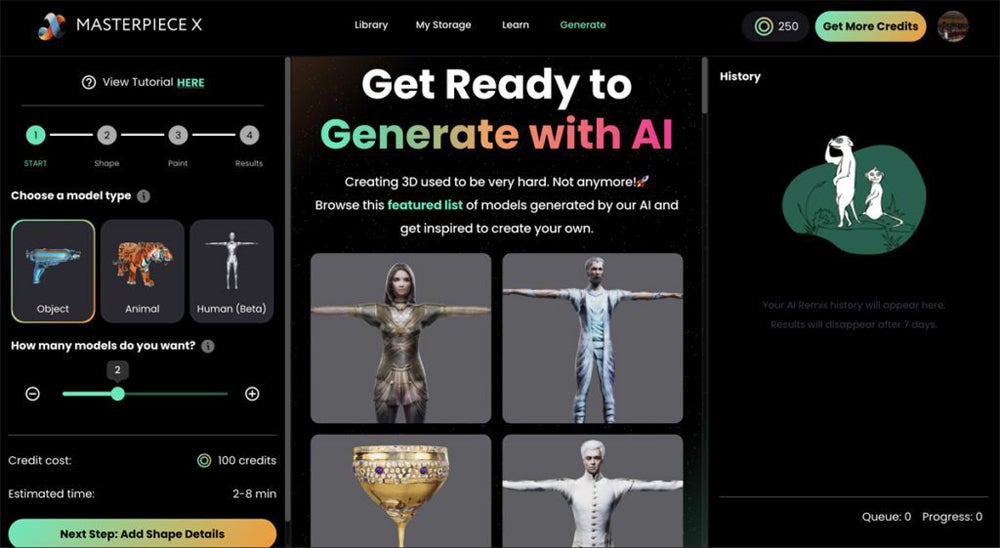
Pros and Cons
| Pros | Cons |
|---|---|
| Ability to animate human models | Building and landscape may generate poorly |
| Library of more than 100 models | Facts and process-based output could be improved |
Pricing
When you sign up, Masterpiece gives you 250 credits for free. Subscribe to the paid plan for more credits. Masterpiece offers on-demand credit packs as well as month-to-month plans. The on-demand credit packs start at $14.99 for 750 credits. The monthly plans are as follows:
- 750 credits: $10.99 per month
- 1,500 credits: $19.99 per month
- 3,000 credits: $36.99 per month
- 750-Credit Packs On-Demand: $15
Features
- Functional 3-D models and animation generation
- Natural language processing technology
- Export your creation to .GLB format
- Storage capability allows you to upload and store files to your private assets
- Supported file types include FBX, OBJ, STL, GLB and GLTF

Rokoko Vision
Best for Full Body Motion Capture
Overall Rating: 4
- Cost: 5
- Feature Set: 4.5
- Ease of Use: 3
- Quality of Output: 5
- Support: 3
Rokoko Vision is a free video-to-3D AI generator that allows beginner creators and hobbyists to record and preview their motion capture data as well as manage and export the captured animations. Simply use your computer’s webcam to capture your 3D motions and use them to animate your characters in minutes, or upload a video and accomplish much the same result—a lifelike 3D animation who kicks, jumps, and moves like the person in the upload, for example.
I tested this tool out and found it did a good job capturing my arm movements—see the image below—but struggled a bit to replicate my swift Jackie-Chan-like kicks, something I’m sure a 3D motion capture expert could easily fix in the editor studio. Overall, I was surprised at how quickly I was able to create a moving 3D animation and how effectively it approximated my movement. From recording to finish, it took about three minutes.
Rokoko, the company that created the tool, is a technology brand that offers other motion capture technology. It has developed a range of products and software solutions for motion capture, including the SmartSuit Pro II, a full-body motion capture suit that captures your body’s motion and streams the data over WiFi in real-time to your digital characters.
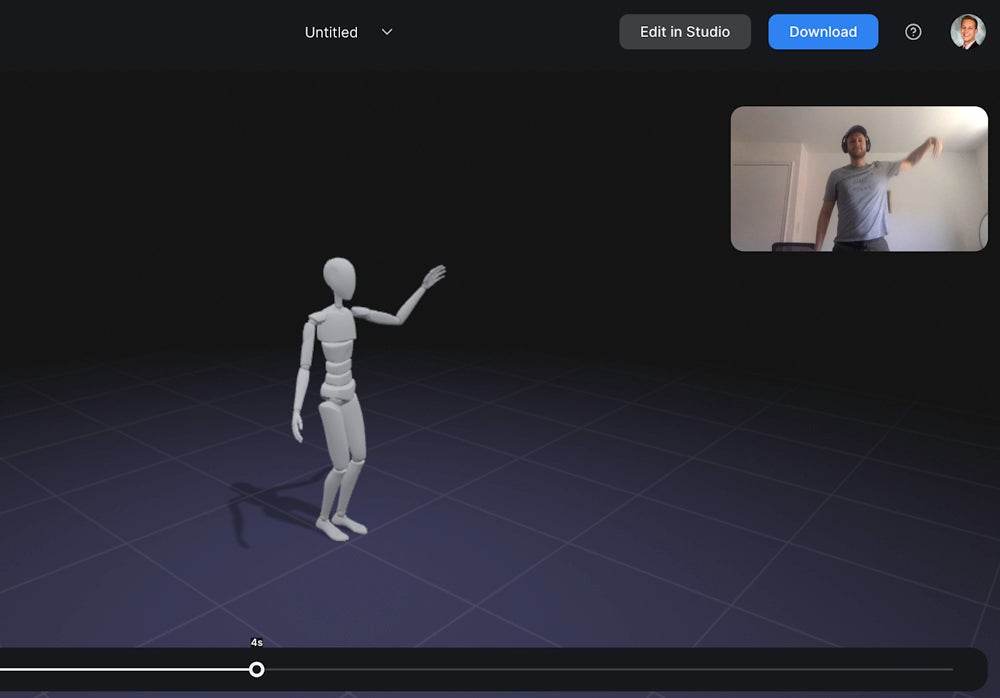
Pros and Cons
| Pros | Cons |
|---|---|
| Livestream to Unreal, Blender and Maya | Free plan has limited support |
| Real-time retargeting | Starter plan lacks live stream capability |
Pricing
Rokoko Vision is available in free (Single-cam) and paid (Dual-cam) versions. The Single-cam is completely free to use, while the Dual-cam offers a 14-day free trial that costs $240 per year afterward. Rokoko pricing plans are as follows:
- Starter: Free forever for indie creators
- Plus: $240 per year or $25 per month for small studios
- Pro: $6,000 per year or $60 per month for medium-sized teams
- Pro: Custom quote for large enterprises
Features
- Users can export files to .FBX or .BVH
- Integration with popular animation software such as Unity, Unreal Engine, Autodesk Maya, and Blender
- Full-body motion capture
- Ability to import and retarget custom characters

Spline
Best for Collaboration and Team Projects
Overall Rating: 3.9
- Cost: 1
- Feature Set: 3.7
- Ease of Use: 5
- Quality of Output: 2.5
- Support: 2
Spline is a web-based 3D AI art generator that lets you create 3D text, interactive 3D experience, 3D mockups, game controls and physics, and 3D character design. You can easily create 3D objects, and Spline provides features to edit the materials of these objects, add interactivity like animations, and export them in various formats.
Big on collaboration, Spline empowers you to work with your team on 3D modeling projects in real time and set individual permissions. There’s no need to share files back and forth with other designers—like two editors working on a Google Doc, you can both work in the same file, watching your teammates’ adjustments in real-time. You can also see who’s currently in the file.
In testing the tool, I found that the editor feature was easy to use and versatile. I could adjust lighting, effects, fog, directional light, mesh, and other settings. I was, unfortunately, limited to only several 3D prompts, including a mushroom, octopus, and gnome-like being. Users must pay to access better prompts and create their own.
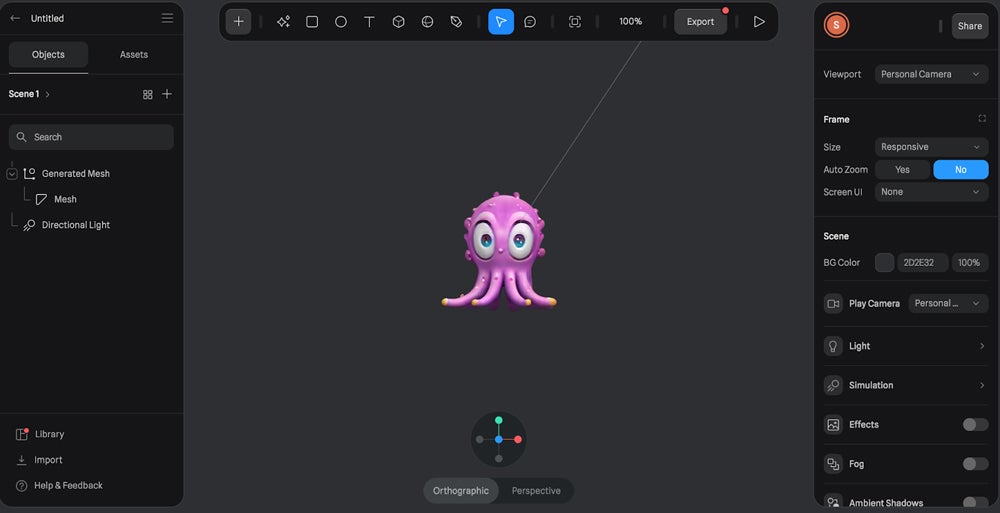
Pros and Cons
| Pros | Cons |
|---|---|
| Drag and drop capability | Free plan lacks export for iOS AR (USDZ) capability |
| Create real-time physics simulations and interactions | Must pay for most 3D prompts |
Pricing
- Basic: Free for personal files and one team project with up to two team files and two editors per team
- Super: $288 per year (1,000 AI credits per month)
- Super Team: $480 per editor, per year (2,000 AI credits per editor, per month)
Features
- Generate textures with AI
- Import videos and create video layers and video events
- Image, video, and 3D Exports
- Export designs as images (JPG/PNG), video files (MP4/GIF), or 3D exports (GLTF/USDZ)
- 3D modeling and animation

Sloyd
Best for Customization
Overall Rating: 3.7
- Cost: 5
- Feature Set: 2.4
- Ease of Use: 5
- Quality of Output: 2.5
- Support: 3
Sloyd is an AI 3D model generator platform that lets you create props, weapons, collectibles, and architectural assets. To use this tool, select from the available category or enter a prompt in the text box.
Currently, Sloyd doesn’t support creating 3D models of people, animals, cars, or scenes. Instead, Sloyd is focused on creating objects rather than complex scenes or living creatures, which means it’s favored by game developers, architects, and artists.
I found the most unique feature to be an in-platform AI text prompter that allowed me to edit whatever object I was building using a text prompt. For example, when I was designing an aquarium, I asked it to “make the roof higher,” and the request was reflected perfectly and quickly in the design.
This in-app AI assistant is a time-saver for designers who sometimes want to avoid the settings toolbar and just type in what they want changed. I also liked how many pre-made 3D assets and objects you can choose as your foundation. This streamlines the process and makes it easier for beginners.
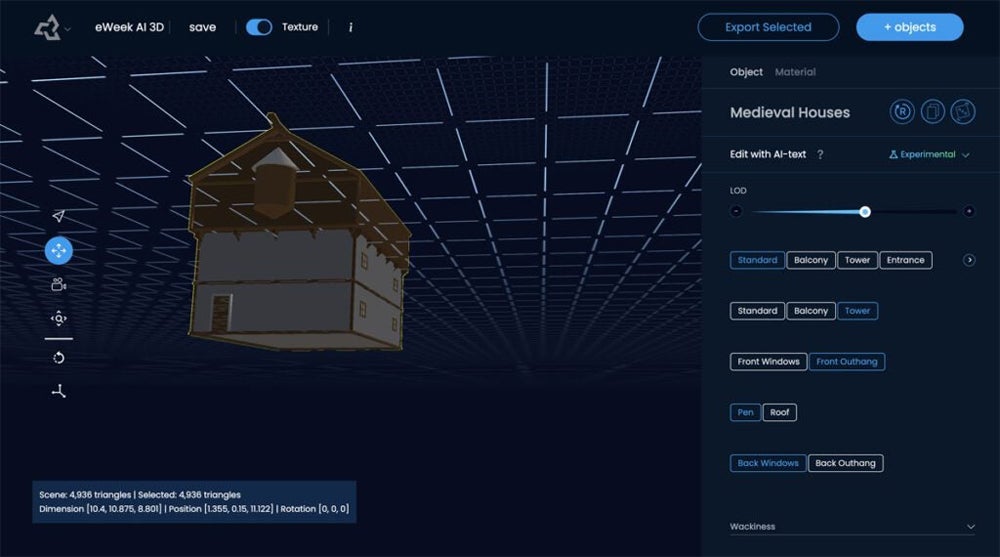
Pros and Cons
| Pros | Cons |
|---|---|
| Supports the generation of props, weapons, collectibles, and architectural assets | Cannot generate human character assets |
| Export options | Requires extra manual input from users |
Pricing
- Starter Free Plan: 30 export credits
- Plus Plan: $180 per user per year (200 export credits per month)
- Studio and Enterprise: Call for quote
Features
- Extensive library of generators
- UV-deployed models optimized for real-time use
- Includes an SDK for real-time generation within game engines

3DFY AI
Best for Gaming and Architecture
Overall Rating: 3.6
- Cost: 3
- Feature Set: 4.5
- Ease of Use: 5
- Quality of Output: 2.5
- Support: 1
The main objective of 3DFY AI is to eliminate the need for human labor in developing 3D content through automation, allowing you to generate high-quality 3D models faster and more efficiently. It has eight categories, including lamps, sofas, tables, ottomans, cutlery, swords, shields, and axes. To create a 3D model, select a category and enter your prompt in the text box; 3DFY AI will generate a 3D model based on your input.
The categories limit its usefulness to those who need these objects for projects. For example, an RPG game designer who needs to equip characters with swords and shields is a good primary end-user, while a developer building an outer space video game is not.
In playing with the tool, I liked how it provided me with example prompts. These helped me identify keywords and prompting strategies I could use to make the 3D object match my vision. I went with “A gentleman’s Chesterfield sofa with two seats and a wraparound back. The sofa has wooden feet.” You can see the result below—I think it did a solid job.

Pros and Cons
| Pros | Cons |
|---|---|
| Easy to use | Generated model only available on the My Models page for 72 hours after generation |
| Quality 3D models in a short time | Limited to specific categories |
Pricing
3DFY uses a credit pricing model that uses two types of credits.
- Generation Credits: One 3D model generation per credit, per prompt; 10 free upon sign-up
- Download Credits: One 3D model download per credit
You can choose to buy models and pay for credits as needed, or subscribe to a month-to-month or annual plan.
- Pay-as-you-Go: $5 flat rate per model download (one download, 10 generations)
- Basic: $180 per year, or $20 per month for five downloads and 30 generations
- Mid-Range: $960 per year, or $110 per month for 40 downloads and 400 generations
- Advanced: $2,100 per year, or $225 per month for 100 downloads and 700 generations
Features
- Supported file formats include .glb, .fbx, or .blend format
- AI-powered text-to-3D generation
- Adjustable texture and mesh quality
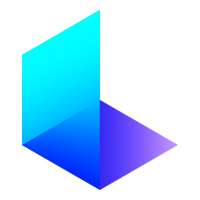
Luma AI
Best for Artistic 3D Videos
Overall Rating: 3.5
- Cost: 5
- Feature Set: 2
- Ease of Use: 4.5
- Quality of Output: 5
- Support: 2
Luma AI’s Dream Machine is a cloud-based 3D generator specializing in turning text and images into realistic 3D videos in the style of a cinematographer. Simply type in a prompt about what you want to create, watch the creation, then enhance it through an iterative process.
Its specialty is five-second long, smooth-motion action shots—like a polar bear scratching its back on a tree, for example, or a cowboy surveying the open desert from his horse. The tool prides itself on its ability to create videos that have realistic physics and beautiful shots.
The tool’s capabilities include movement, morphing, text, and Janus, a 3D technique that creates depth by providing each view with multiple front faces. In exploring the 3D generated videos, I found them artistically stunning. However, when trying to create videos of my own—I was keen to see a brown bear fight a tiger—the app kept me waiting in the queue for hours and hours, with a message that it was slow due to extremely high demand.
The tool was released only recently and is still in its early stages, so it’s fair to assume that such delays will be put to rest sooner than later, especially for paid users. For now, the average time is 120 seconds—but that’s once you’re at the top of the queue. The line length tends to vary widely depending on traffic to the site.
Overall though, from what I’ve read and watched online from users, the outputs seem like signs of good things to come. However, each clip I’ve seen seems to have a small amount of warping, especially the more complicated prompts like “dinosaur enters office and tears up the place.” My advice is to keep an eye on this tool.

Pros and Cons
| Pros | Cons |
|---|---|
| Offers 30 free 3D generations per month | Generations can take a long time to load |
| Easy-to-use with clear instructions and examples | Less ability to control the 3D output than other tools |
Pricing
- Free: 30 generations per month
- Standard: $29.99 per month (120 generations per month)
- Pro: $99.99 per month (400 generations per month)
- Premier: $499.99 per month (2,000 generations per month)
Features
- Text and image AI 3D video generator
- Realistic, artistic videos
- Beginner-friendly prompting
- Smooth five-second action shots

DeepMotion
Best for Full-Body Marker Tracking
Overall Rating: 3.4
- Cost: 5
- Feature Set: 3
- Ease of Use: 5
- Quality of Output: 1.2
- Support: 1
DeepMotion is a video-to-3D generator that allows you to create dynamic and realistic physics-based animations. Through hand tracking, face tracking, and even multi-person tracking, the platform enables you to make and simulate lifelike and interactive character animations, including full-body motion capture and simulation of physical interactions.
I found this tracking feature to be the platform’s real selling point. Without hiring actors, developers can physically act out the motions they need to add to characters or objects, which is not only a quick and easy way to add authenticity to 3D environments, it also enables creators to edit animations they need to change.
To use the tool, first upload a video of yourself or another person—the multi-person tracking allows for up to eight people to be in the video. Next, upload your animated characters, create them with the built-in Ready Player Me, or use one of the app’s premade avatars.
After that, you can customize settings like foot locking, hand-to-ground contact, and others, and then use the Rotoscope Pose Editor to trace the motion of your animated avatar directly over the uploaded video. In the end, you should receive a 3D animated character that fits your vision.
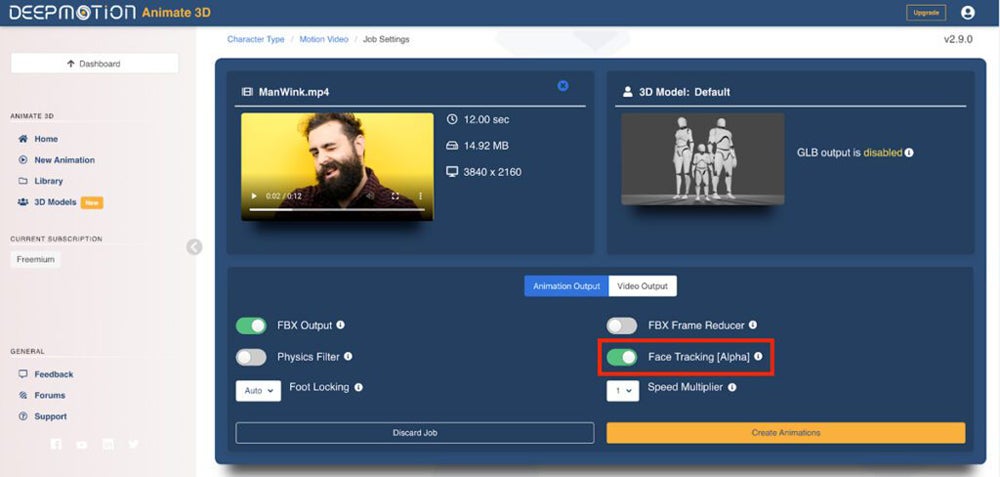
Pros and Cons
| Pros | Cons |
|---|---|
| Physics simulation | Freemium plans only available for personal use |
| Hand-to-ground contact | Motion smoothing feature only available to professional and studio plan users |
Pricing
- Free: Up to 60 credits per month
- Starter: $108 per year, or $15 month-to-month for up to 180 credits per month
- Innovator: $204 per year, or $48 month-to-month for up to 480 credits per month
- Professional: $468 per year, or $117 month-to-month for up to 1,500 credits per month
- Studio: $996 per year or $300 month-to-month for unlimited credits
Features
- Supports multiple output formats, including fbx, bvh, glb, dmpe, mp4, jpg, png and gif
- Tracks basic facial expressions and hand gestures
- Full body marker tracking includes face-, hand-, and multi-person tracking
- Foot locking capability

Ponzu
Best for Texture Generation
Overall Rating: 3.3
- Cost: 5
- Feature Set: 2.4
- Ease of Use: 2
- Quality of Output: 2
- Support: 4
Ponzu is an AI texture generator that creates high-quality 3D models for various applications. It has an intuitive user interface; the first thing you see when you launch the website is a text box where you can input your prompt for the texture you want to generate.
Below the text box is a drop-down with 10 texture options, including photorealistic, art nouveau, toon, and cyberpunk, making it particularly useful for visual effects artists and designers who need realistic and diverse textures for their projects. When the generation is complete, you’ll receive tileable texture and an interactive 3D render.
The thing I liked most about the tool is that after the rendering you can adjust the result with the toolbar on the right hand side of the page for map strength, angular occlusion, and other settings until you’re happy with the texture package. The thing I disliked was how frequently I received a “failed to fetch” error. Obviously the tool is still in its early stages and needs some help recognizing and executing more prompts.
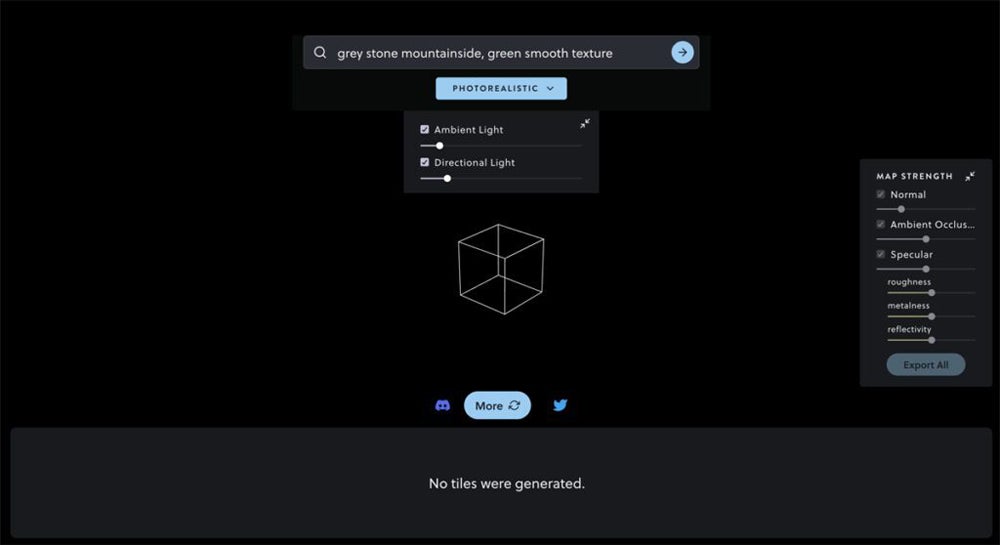
Pros and Cons
| Pros | Cons |
|---|---|
| Versatile applications | Sometimes outputs a “Failed to fetch” error |
| Customizable options | Overall technical infrastructure could be improved |
Pricing
- Free to use
Features
- AI texture generation
- Users can further customize the generated textures by adjusting parameters
- Enables adjustment of the specular and diffuse lighting

NeROIC
Best for Capturing High-Quality Geometry
Overall Rating: 3
- Cost: 5
- Feature Set: 3.2
- Ease of Use: 2.5
- Quality of Output: 2.5
- Support: 1
NeROIC (Neural Rendering of Objects from Online Image Collections) is an AI-based technology that can generate 3D models from 2D images. It can also create a 3D scene from a video.
NeROIC’s AI model uses images of objects taken under different conditions and improves their accuracy in three steps: detecting camera positions on photo; segmenting each object; and generating geometry and creating 3D maps. This is useful for those looking to capture geometry and appearance properties of objects for rendering applications.
What I found most notable about NeROIC is the ambition of the platform. That it can create such an array of content—even in an AI-based field that is so new—suggests that this is a tool to keep an eye on; it’s likely that it will only grow more useful in the months to come.
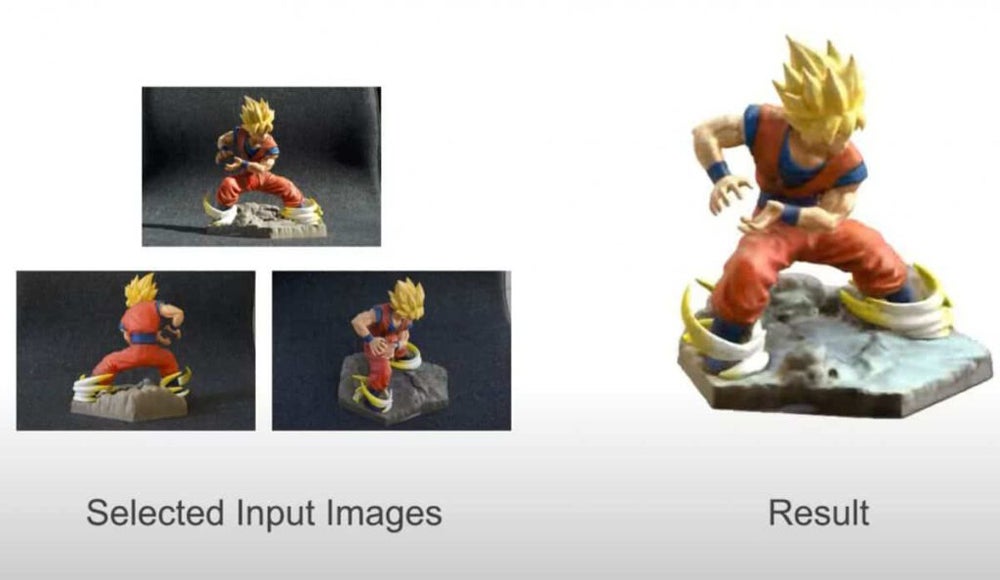
Pros and Cons
| Pros | Cons |
|---|---|
| Feature-rich and comprehensive | Limited product information |
| Customizable | Steep learning curve for beginners |
Pricing
- Free to use
Features
- Image-to-3D and video-to-3D
- Resolves the material properties (including Specularity and Roughness maps) and surface normal of the captured object
- Enables relighting and background shifts
To see the leaders among today’s generative AI providers, see our guide : Generative AI Companies: Top 12 Leaders
Key Features of Best AI 3D Generators
While there are a variety of sub-sectors within the AI 3D sector, a few features are important throughout the sector, like compatibility with file formats, realistic rendering and customizability.
Compatibility With Various File Formats
Integration with industry-standard file formats (such as OBJ, FBX, or GLTF) is essential for seamless collaboration with other 3D modeling and rendering tools. This ensures that generated models can be easily imported and used in various workflows.
Speed and Efficiency
Generating 3D models can be a computationally intensive task. The AI 3D generator you choose should have optimized algorithms and efficient processing capabilities to produce results quickly.
Realistic Rendering
When shopping for an AI 3D generator for your organization, look for a tool that can produce highly realistic and detailed 3D models. This includes accurate lighting, shadows, textures, and overall visual appearance. This is vital for creating lifelike and visually appealing virtual environments.
Customizability
The ability to customize and fine-tune generated 3D models is an invaluable feature. You should be able to adjust various parameters and properties to achieve the desired output, from lighting to background to overall visual context.
How to Choose the Best AI 3D Generator for Your Business
Realize that all AI 3D generators do not function in the same way, and the best option for you and your business depends on your needs and preferences. Some companies may need a text-to-3D generator, while image-to-3D or video-to-3D generators may be more relevant for others.
Even when you know the type of 3D generator you need, you must ensure that the tool you choose offers your desired features and capabilities. For instance, Meshcapade and Sloyd are both text-to-3D generators. However, Meshcapade can generate assets like human characters, while Sloyd is incapable of doing that; Sloyd’s strengths lie in generating objects like weapons, collectibles and architectural assets.
To select the best AI 3D generator for your organization, you must first define business needs. Compare your needs with the offerings of various AI 3D software providers and determine which aligns most with your requirements.
How I Evaluated the Best AI 3D Generators
To write this review, I analyzed the best AI 3D generators based on five key points, including cost, feature set, ease of use, quality of output and support. I collected primary product data from the vendors’ websites, including information on pricing, features and customer support. Where possible, I conducted hands-on testing of each generator to evaluate their performance.
Feature Set | 30 percent
The feature set carried the most weight. I assessed the range of features offered by each AI 3D generator. I considered who the solution caters to, whether it’s geared for professional users or beginners. I also checked for the availability of real time collaboration features, access to a database of digital content and motion capture technology. I ranked each vendor based on the comprehensiveness of their feature set.
Ease of Use | 25 percent
I assessed the user interface and user experience of each AI 3D generator. I considered how easy it was to navigate and understand the platform. I also analyzed users’ feedback on reputable review sites to learn about current and past users’ experiences with the tools. This information enabled us to gauge each tool’s strengths and weaknesses, quality of support and the overall usability of the product.
Cost | 20 percent
I evaluated each AI 3D generator pricing structure. I checked for the availability of a free trial or free forever plan to enable us to test the platform. I ranked each vendor based on their availability of free trial, low cost subscription and pricing visibility.
Support | 15 percent
I looked at the level of customer support provided by each AI 3D generator vendor. I considered factors such as the availability of customer support channels (e.g., live chat, email, phone), response times, and overall customer satisfaction with the support received. The availability of tutorials or documentation to help users navigate and utilize the software was also a major point of consideration.
Quality of Output | 10 percent
I also assessed the quality of the output generated by each AI 3D generator. In addition to our evaluation of the level of detail, accuracy and precision in the 3D models produced, I looked at factors such as the ability to generate fully functional 3D models and also checked if the tool renders a live video stream.
Frequently Asked Questions (FAQs)
Most AI generators offer a free plan. Nine out of the ten tools I reviewed offer a free plan.
There is no one size-fits-all in when it comes to selecting the best AI 3D generator. The best one for you will depend on factors unique to you such as your organization size, and the type of file you want to create a 3D model for. That said, the above list includes the best AI 3D generator for various users and use cases.
You can create your 3D designing by typing a text prompt or uploading an image or video to the AI 3D generator.
The three main AI 3D modeling techniques are text-to-3D models, image-to-3D models, and video-to-3D models.
Bottom Line: The Best AI 3D Generators Are Democratizing Access to 3D
Before AI 3D generators became commonplace, those looking to create 3D designs had to use 3D software like Autodesk Maya, Blender or Adobe Substance 3D Designer to create 3D models. But unlike AI 3D generators, not everyone can use traditional 3D software, as it requires specialized knowledge. AI 3D generators are revolutionizing and democratizing access to 3D designs by allowing anyone, regardless of their technical skills, to create stunning 3D designs with ease.
Whether you are a business professional, tech enthusiast, game developer, graphic designer, or just an interested dabbler, AI 3D generators can help you create 3D designs in a fraction of the time and effort compared to traditional methods.
To see a list of the leading generative AI apps, read our guide: Top 20 Generative AI Tools and Apps